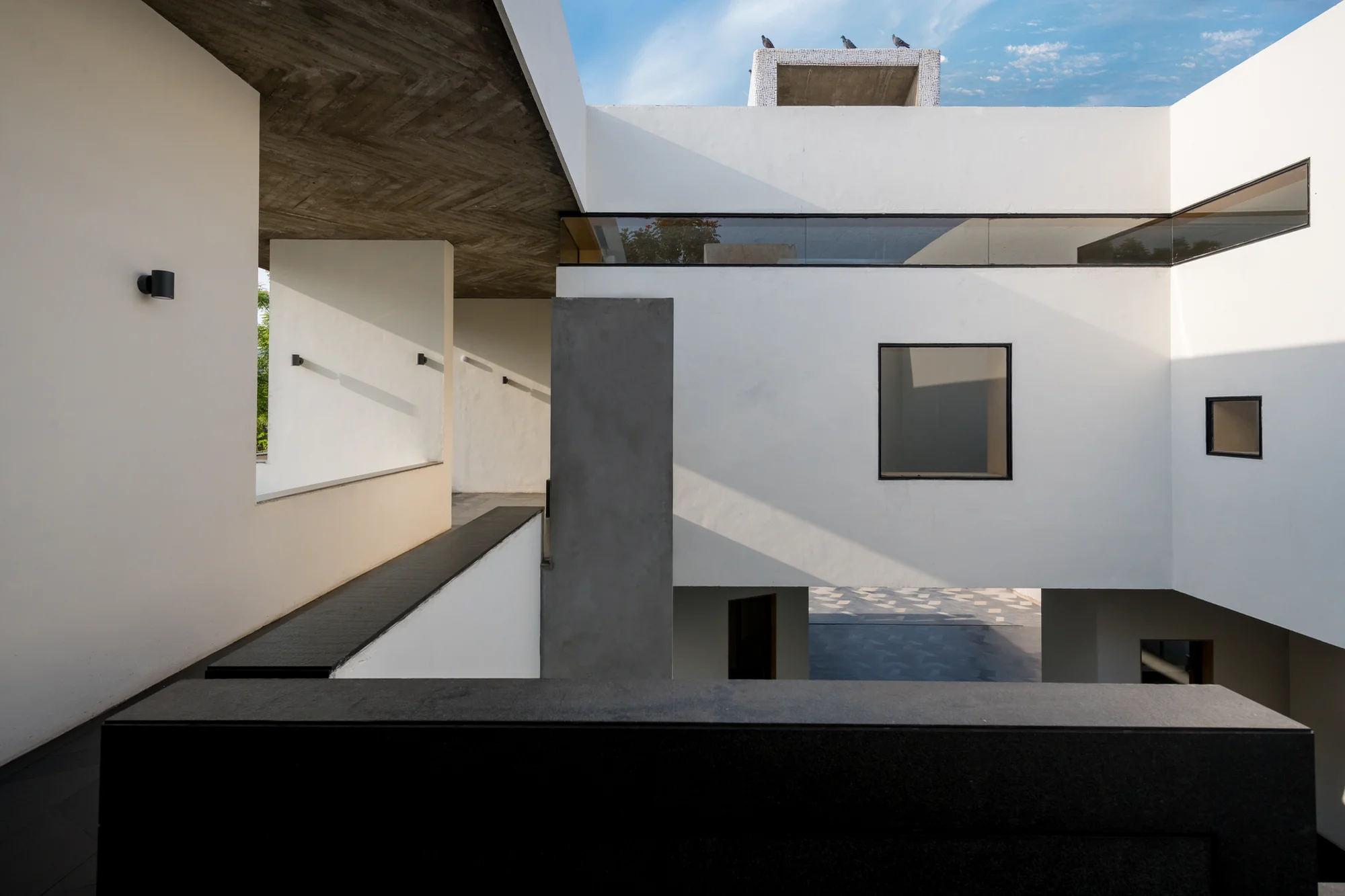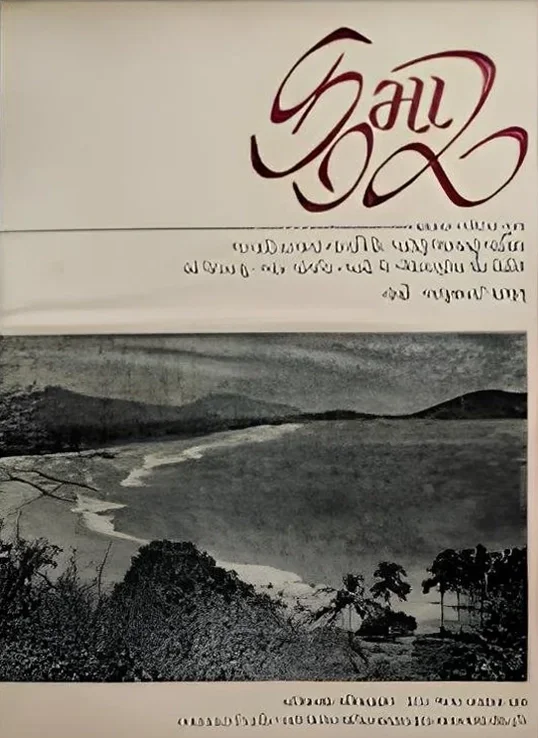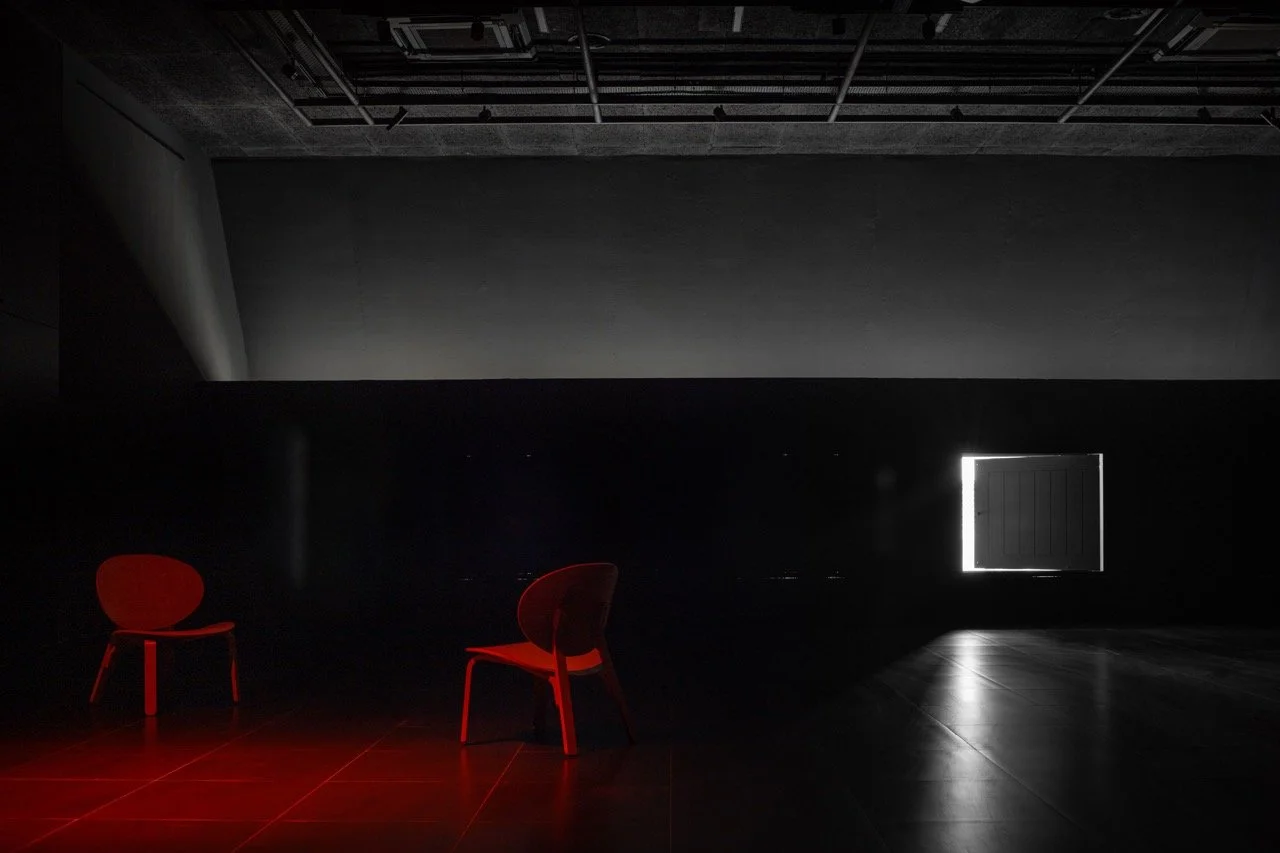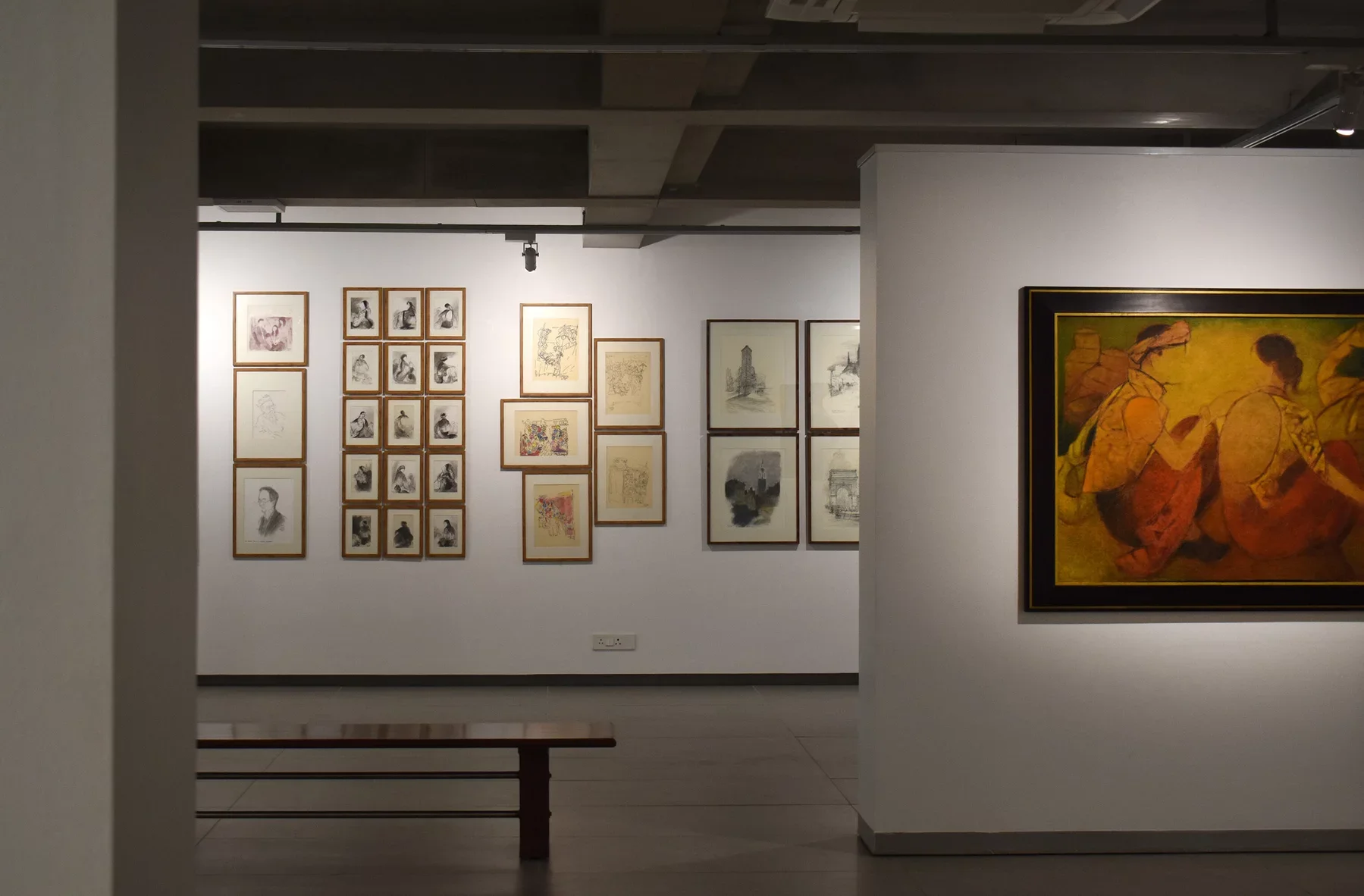
November 2025
Ahmedabad Cultural Week 2025
Shreya Ajmani
079 Stories, Exterior view
It’s the first week of October, and Ahmedabad’s streets are still pleasantly abuzz with a distinctly festive mood. The monsoons are behind us, and the city is set to welcome its first-ever art and culture week, Ahmedabad Cultural Week (ACW), led by its Curatorial Director, Shristi Sainani.
Its name, “Ahmedabad Cultural Week”, is intentional. For decades, the city has been home to practitioners of dance, music, film, architecture, and more. Its people have witnessed some of the world’s greatest minds at work, like Le Corbusier, B.V. Doshi, Louis Kahn, and Robert Rauschenberg. Ahmedabad is one of those special cities where traces of the country’s great patrons still remain, their impact lasting not only in the institutions and rare art collections they left behind, but in the way they built a ritual around art and culture, engaging the city’s people in a shared activity, naturally building on one of the city’s strengths: its community.
Their strong sense of community is evidenced by the calm and warm nature of its people. Art spaces that are usually intimidating were filled with young adolescents, exploring and creating memories of their own. From 3-12 October, 15 of the city’s art and culture spaces came together to host previews, walkthroughs, and special screenings across the board.
Kumar Magazine
Kasturbhai Lalbhai Museum, Interior view
Over six centuries, Ahmedabad has advanced year by year, creating a cultural ecosystem shaped not by any single hand but through inherited rituals and collective endeavor. To trace its evolution is to witness how a city learns, adapts, and renews itself across generations. Among those who profoundly influenced this creative current was Ravishankar Raval (1892–1977), one of Gujarat’s most celebrated painters, art educators, and journalists. Often credited with ushering in a renaissance of art in the region during the British Raj, Raval’s sensibilities were shaped by his time in Bengal and Mumbai. In 1915, he met the journalist Hajji Mohammad Alarakhiya and began working as an artist-illustrator for Visami Sadi (The Twentieth Century), a magazine that sought to reimagine Gujarat’s cultural voice. Soon Raval established an art school in the city in 1919, and founded Kumar in 1924, a literary magazine that remains in circulation nearly a century on. As Ahmedabad’s skyline evolved through the 1970s, propelled by the textile boom and the patronage of the Lalbhai and Sarabhai families, the city became a site of global cultural exchange. In 1975, Asha and Suhrid Sarabhai hosted Robert Rauschenberg, whose collaboration with local craftspeople inspired his Rauschenberg Overseas Culture Interchange (ROCI) project. Three years later, in 1978, Suhrid’s elder brother, Anand Sarabhai, hosted Roy Lichtenstein, who left behind an illustrated note, further affirming Ahmedabad’s quiet but enduring role in connecting worlds through art.
In parallel, the Lalbhai family had also been shaping an artistic legacy. In the 1930s, they acquired a significant collection of works from the Tagores, assisting the family during a period of financial strain. The collection, rich in diversity and history, included meticulously preserved miniatures, drawings by members of the Tagore family, modernist works from the Bengal School, and painted postcards from pre-Independence India.
These works now reside in the family’s former colonial-era home, built in 1905 and later restored by architect Rahul Mehrotra. In 2017, this home was transformed into the Kasturbhai Lalbhai Museum, which is where Ahmedabad Cultural Week marked its opening day on October 3.
Indigo Art Museum, Interior view, Annie Morris (foreground) & Manisha Parekh (background)
Indigo Art Museum, Interior view
The museum’s compound is also home to the Indigo Art Museum. Built in the 1940s beside the main house, the Claude Batley House originally served as kitchen and staff quarters. Today, it is the only museum in the world dedicated to indigo. It also hosts artist residencies and workshops, presenting itself as a “living museum.” For ACW, the entire complex was activated by artists exploring indigo in their work, ranging from Alicja Kwade to Tanya Goel to Chiaki Maki. The building, designed around a courtyard open to the elements, retains its original layout, giving the exhibitions a spacious feel. On the first floor, a solo exhibition by Alwar Balasubramanium places the natural world at the centre of his work. Collectively, these artists take you through the different processes of using indigo and the history behind it, showing how the colour has been made, used, and reimagined. This is where ACW really shines — revealing not just art, but the stories behind the colours we think we know.
Conflictorium, Interior view
Conflictorium, Interior view
The Lalbhais also contributed a part of their treasured collection to the Lalbhai Dalpatbhai Museum — one of the venues for ACW. The museum took shape through a collaboration between industrialist Kasturbhai Lalbhai and Jain Acharya Muni Punyavijayji, who donated his manuscripts, bronzes, and cloth paintings to the newly founded LD Institute of Indology. In 1984, architect B.V. Doshi designed the museum building adjacent to the Institute, giving the collection a physical form. Here, the story of the region’s art, history, and architecture feels continuous — the manuscripts and medieval Indian sculptures tracing centuries of craftsmanship and devotion, leading seamlessly to Doshi’s architecture just beyond. The city is also home to the architect’s office and archive, Studio Sangath, where drawings, models, and fragments offer rare glimpses into the many ways his buildings have been imagined and made, bringing you closer to the architecture encountered at some of ACW’s sites.
Similarly, further into the city, the Conflictorium, a participatory museum built around ways that address the ideas, questions, and structures of conflict by Avni Sethi, is one of the most intriguing museums one can visit. Founded in 2013, it is open and easily accessible — children from the nearby streets often wander in, blurring the line between those spoken about and those who speak. As one approaches the threshold, geese walk freely amidst the many rickshaws on the road. The museum is compact yet expansive in its ambition. It holds space for difficult conversations, grounding them in a hyper-local context where conflict often teeters on the brink. One room, in particular, presents the evolution of scrolls documenting the rights of the “untouchable,” with a podium at its center and the constitution of the country placed upon it. The space is unassuming, but as you walk through it, you are greeted by facts, and a grounding framework for what you are about to witness — it's confronting, engulfing, and you leave the room feeling enlightened.
Lalbhai Dalpatbhai Museum Interior View
Kanoria Centre of Arts, Exterior view
Kanoria Centre of Arts, Interior view ceramics studio
Kanoria Centre of Arts, Interior view Urmila Art Gallery
Sethi’s work with the Conflictorium and Mehnat Manzil, small museums that connect the art community to the people that inhabit the city, is an important driving force in Ahmedabad, adding to the critical discourse on the city.
Another pivotal site in the city, part of ACW, is the Kanoria Centre for Arts — a space for art and art-making since 1984, founded by Urmila Kanoria along with Doshi after a chance conversation on a flight. Its red-bricked, low-rise galleries, archives, and film screening rooms sit around green lawns and trees, with spots to lounge beside the Chauraha Art Cafe. The centre has witnessed one of India’s most exciting moments for contemporary art; its inaugural stone was laid by M.F. Husain. The artist even credited the centre in a letter saying, “KCA over the years has grown to be a most useful place for the visual artists from all over the country and abroad to work and exchange ideas. Certainly a much needed space doing remarkable work and exchange ideas. Certainly a much needed space doing remarkable work,” signed 1991.
Recently, KCA added the Urmila Kailash Black Box, designed by Khushnu Panthaki Hoof, Doshi’s granddaughter, and Sönke Hoof of Studio Sangath. During ACW, they hosted a film screening curated by Anupa Mehta Contemporary Art, supported by ART India, featuring films by Nikhil Chopra, Vibha Galhotra, and Ish S. Across the centre, in the Urmila Art Gallery, a solo exhibition by Dhruvi Acharya, curated by Girish Shahane, traces the artist’s earlier practice, showing how the figures she depicts tell her story through time.
Amdavad Ni Gufa, Interior view
Amdavad Ni Gufa, Exterior view
Kailash Black Box, Studio Sangath, Exterior view
Kailash Black Box, Studio Sangath, Interior view
There’s a constant dialogue between art history and contemporary practice in Ahmedabad. You can sense the modernists’ processes around you, feel their presence in the stories and history that surround you. Just down the road from KCA is the iconic Amdavad ni Gufa, an underground gallery built by Doshi and painted by Husain. Its cave-like, dome-shaped arches come alive with Husain’s brush and compositions. Mumbai and Delhi may show these artists’ work in polished galleries, but Ahmedabad is where you get to experience them as people.
Iram Art Gallery, Interior view Sacred Cipher: Rakesh Patel
Archer Art Gallery, Interior view Lines of Life: Faces, Figures, and Fantasies, Vrindavan Solanki
Samara Art Gallery, Interior view Shadow & Form: Illuminations in Steel, Sonal Ambani
Beyond these landmarks, the city is home to contemporary galleries like Archer Art Gallery, a former graphic design studio turned gallery, as well as Iram Art, 079 | Stories, and Samara Art Gallery. These spaces give a sense of the current art scene, but it’s Ahmedabad’s institutions that make its cultural landscape distinctive. Through preservation, careful archiving, and responsible storytelling, they create a coherent, progressive record of the region’s art and history. Its proximity to Baroda, a city that nurtured some of the country’s greatest artists, reinforces this focus on the maker rather than the market. Ahmedabad offers a singular experience today: a city with deep roots, where a continuous thread of creativity takes you on a journey across time. This cultural week is not just about seeing art; it’s about experiencing the city’s culture as an ecosystem, where art, architecture, craft, and community all intersect.
Ahmedabad Cultural Week
Shreya Ajmani is a writer and arts professional focusing on art from Asia and its diasporas. She has contributed writing to Artnet, Artsy, Frieze, Ocula, Art India, and Bonhams, among others, as well as to exhibition catalogues. Her words have been displayed in Vadehra Art Gallery's exhibition 'On Purpose' (2023) and Yoko Ono's 'Arising' project at the Vancouver Art Gallery (2021–22).
She co-led Bonhams' 'The Asia Edit: Contemporary Art from the South Asian Diaspora' (2024) and 'The Trailblazers' (2023). From 2022 to 2023, she oversaw operations and communications at the Mumbai Gallery Association, coordinating the 10th and 11th editions of Mumbai Gallery Weekend.
In 2021, she co-organised 'Artists for Covid Relief', which raised 126,000 rupees for pandemic relief. She also served as an ambassador for WWF’s 'Art For Your World' campaign and worked with Saturday Art Class.

















